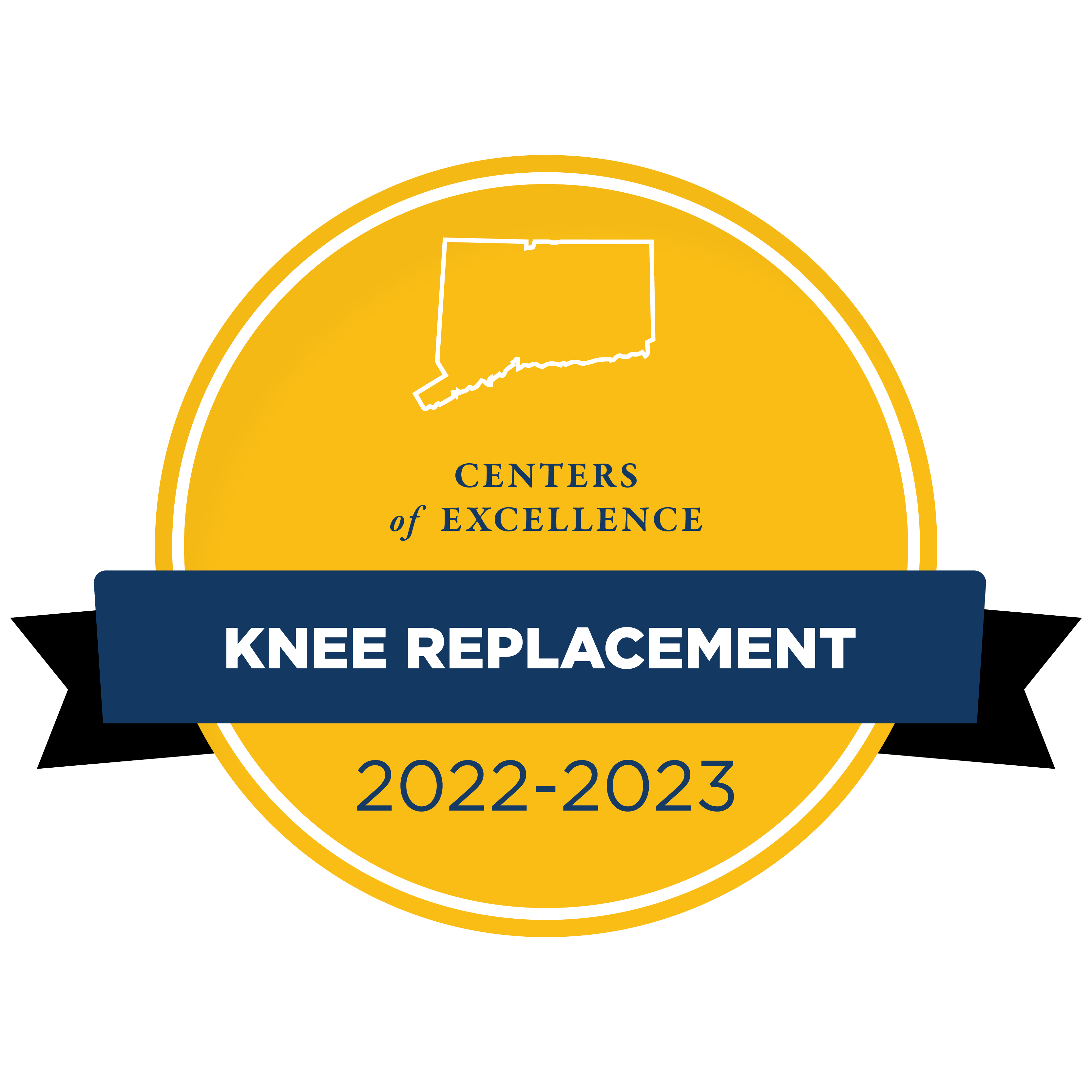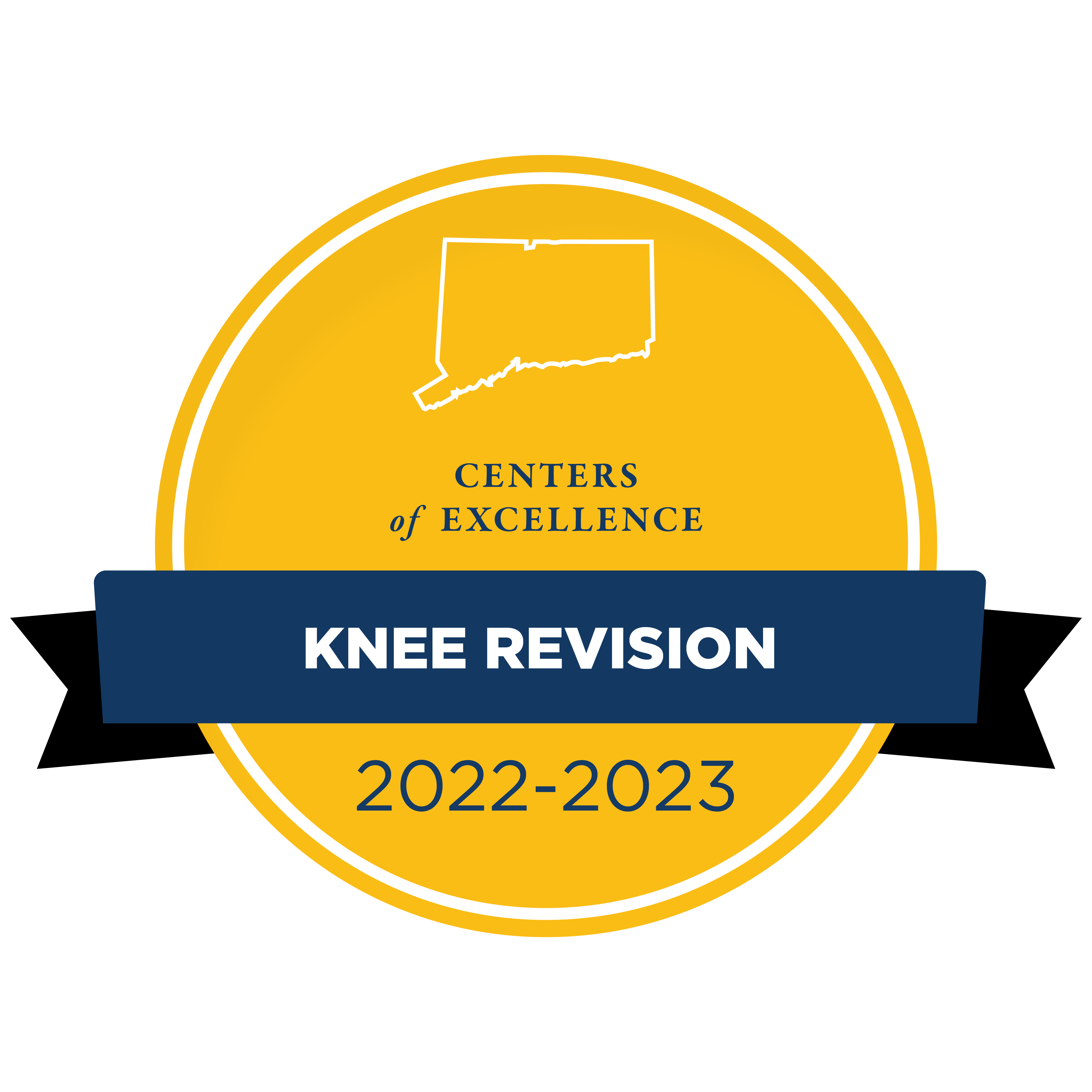Knee
Knee Replacement
If your knee is severely damaged by arthritis or injury, it may be hard for you to perform simple activities and you may even begin to feel pain at rest. If medications, changing your activity level, and using walking supports are not helpful, you may want to consider knee replacement surgery.
Knee replacement surgery, also known as arthroplasty, repairs your knee's damaged and worn surfaces to try and relieve your pain, correct your leg deformity, and help you resume normal activities.
An important factor in deciding whether to have knee replacement surgery is understanding what the procedure can and can't do. More than 90 percent of individuals who undergo knee replacement experience a dramatic reduction of knee pain and a significant improvement in the ability to perform common activities of daily living. But total knee replacement won't make you a super-athlete or allow you to do more than you could before you developed arthritis. Following surgery, you will be advised to avoid some types of activity, including jogging and high impact sports, for the rest of your life.
Causes
Knees wear out for a variety of reasons. These include inflammation from arthritis, injury, or simple wear and tear.
The most common cause of chronic knee pain and disability is arthritis with osteoarthritis, rheumatoid arthritis, and traumatic arthritis being the most common forms. Most knee arthritis is due to a lifetime of wear and tear. Nobody knows why some people get severe arthritis, while others don't, or why one knee in the same person gets arthritis, while the other does not. Arthritis can run in families. Previous injury and obesity are other known causes of arthritis.
Osteoarthritis usually occurs after the age of 50 and often in an individual with a family history of arthritis. The cartilage that cushions the bones of the knee softens and wears away. The bones then rub against one another, causing knee pain and stiffness.
Rheumatoid arthritis is a disease in which the synovial membrane becomes thickened and inflamed, producing too much synovial fluid that over-fills the joint space. This chronic inflammation can damage the cartilage and eventually cause cartilage loss, pain, and stiffness.
Traumatic arthritis can follow a serious knee injury. A knee fracture or severe tears of the knee's ligaments may damage the articular cartilage over time, causing knee pain and limiting knee function.
Symptoms
Typical symptoms include:
- Severe knee pain that limits your everyday activities, including walking, going up and down stairs, and getting in and out of chairs. You may find it hard to walk more than a few blocks without significant pain, and you may need to use a cane or walker.
- Moderate or severe knee pain while resting, either day or night.
- Chronic knee inflammation and swelling that doesn't improve with rest or medications.
- A feeling of looseness.
- Knee deformity: a bowing in or out of your knee.
- Knee stiffness: inability to bend and straighten your knee.
- Failure to obtain pain relief from non-steroidal anti-inflammatory drugs. These medications, including aspirin and ibuprofen, often are most effective in the early stages of arthritis. Their effectiveness in controlling knee pain varies greatly from person to person.
- Inability to tolerate or complications from pain medications.
- Failure to substantially improve with other treatments such as cortisone injections, physical therapy, or other surgeries.
Diagnosis
If you are experiencing any of the above symptoms, please consult with an orthopedic specialist. An evaluation consists of several components:
- A medical history, in which your orthopedic specialist gathers information about your general health and asks you about the extent of your knee pain and your ability to function.
- A physical examination to assess your knee motion, stability, strength, and overall leg alignment.
- X-rays to determine the extent of damage and deformity in your knee.
- Occasionally blood tests, a Magnetic Resonance Image (MRI), or a bone scan may be needed to determine the condition of the bone and soft tissues of your knee.
Treatment
Your doctor will go over the results of your evaluation with you and discuss the best method to relieve your pain and improve your function.
The first steps in treating knee arthritis are activity modification, a program of regular exercise, and weight loss. The muscles around the knee protect it during activity, however, every step puts several times your body weight through your knee. Improved strength and decreased body weight will prolong the life of your knee. Soft knee braces and modifications of your shoe can sometimes help, as well as medications like Tylenol® or anti-inflammatories (NSAIDs), and some dietary supplements. You may need to use a cane or walker.
The next step is injections. Steroids may be used to decrease inflammation, or a lubricant may be used to improve the function of the knee. They can be repeated from time to time if they help.
Surgery is the final step in the treatment of knee arthritis if the steps above have failed and the pain from the arthritis is limiting your lifestyle and activities. A knee replacement can help to eliminate most of the pain from arthritis. Surgical options include knee arthroscopy (although this is rarely used just for arthritis), partial knee replacement, and total knee replacement. The goal of knee replacement is to provide a pain-free knee that allows relatively normal activities and lasts for as long as possible. Using the current techniques, 90 percent to 95 percent of knee replacements should last 15 years or longer.
Total knee replacement can be performed in the traditional method with an 8 to 10 inch incision down the center of the knee to replace lost cartilage with metal and plastic. Minimally invasive knee replacement is a newer technique that attempts to accomplish all of this through a smaller incision of 4 to 6 inches.


